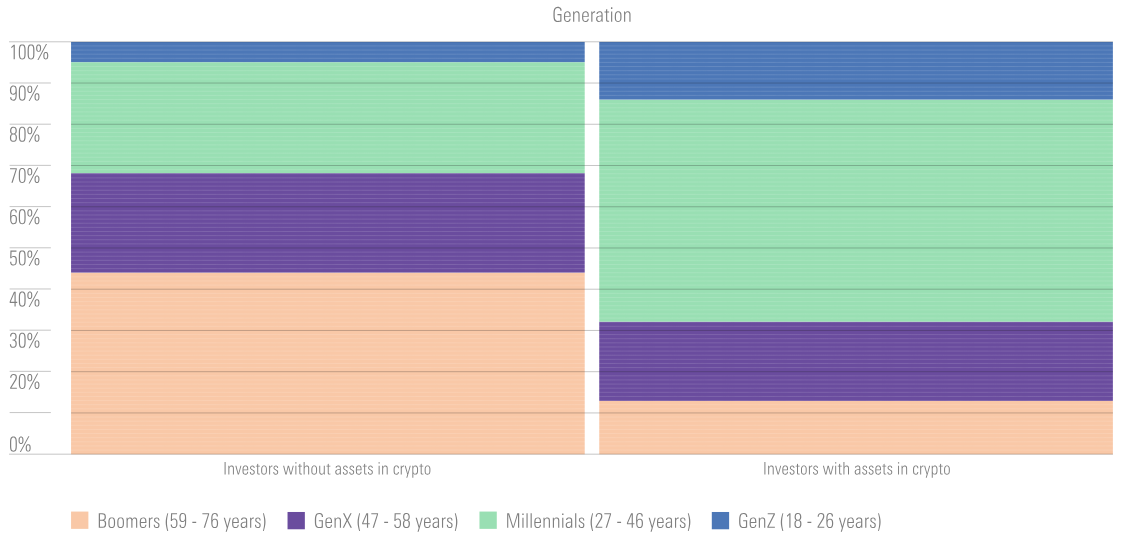Now Reading: Bitcoin’s Transformative Role As A Retirement Asset
-
01
Bitcoin’s Transformative Role As A Retirement Asset
Bitcoin’s Transformative Role As A Retirement Asset

Bitcoin Magazine

Bitcoin’s Transformative Role As A Retirement Asset
According to the Bitcoin Reserve Monitor, 20 states have pending Strategic Bitcoin Reserve (SBR) legislation. As bullish as these efforts seem, they may be overshadowed by a sweeping federal framework pushed by Senator Cynthia Lummis, now the head of the Banking Subcommittee on Digital Assets.
After 16 years of speculation, experimentation, block wars and debanking, it seems that Bitcoin is on the precipice of a major threshold. Bitcoin’s inflation rate is already lower than 1% and its 21 million BTC scarcity serves as a bulwark against inevitable currency erosion by the world’s central banks.
Perhaps most importantly, Bitcoin’s ledger can be easily verified by everyone, unlike gold reserves. These and other factors are clearly positioning Bitcoin as the premiere retirement asset, one that is highly resistant to tampering by central planners.
But what would leveraging Bitcoin for retirement actually look like? First, we need to examine the importance of the very fact that BSR is being discussed at such a high level.
BSR: The Final Perceptual Push?
At the end of the line, the ultimate resource for human structure to function is trust. It underpins not only interpersonal relations but large-scale societal systems. This is why narrative control, recently exposed by Elon Musk’s DOGE going through USAID funding, is so critical for governance systems regardless of what they are labeled as.
Although highly precious, trust is a fungible resource. For the purpose of social stability, if trust in fakery is achieved, it is as valuable as trust in truth. Yet, the former type of trust lacks resilience, necessitating ever-escalating levers of control. In turn, this makes managed trust more fragile.
Opposite to managed trust, we have Bitcoin as a trustless system. Paradoxically, Bitcoin represents the highest, most resilient form of trust management precisely because it minimizes subjective trust at the same time as it maximizes objective truth via its cryptography and proof-of-work mechanism.
At a glance, this would make Bitcoin the obvious choice as a store of value, right? Not so fast. Time and time again, surveys have shown that the older people are, the less trustworthy they are of Bitcoin and digital assets in general.

2023 Voice of the Investor study. Image credit: Morningstar
Why is that the case? Why would people with a greater experience pool be least trustful of the highest form of trust management like Bitcoin? Wouldn’t they welcome such major innovation?
That’s because reputational signaling overrides technical understanding. And for most people, technical understanding is not even attempted without the social push. In other words, for something to be adopted and integrated, it has to be sanctified by authority figures, lest it be constrained to the fringes.
The older demographic, specifically, relies on “greater reputation-related activity in mentalizing/memory areas while making their decisions” as shown from computational modeling in a 2023 study titled Age-related Differences in the Social Associative Learning of Trust Information.
Suffice to say, for the older demographic, the lowest common denominator mainstream media has been the primary purveyor and sanctifier of Bitcoin information. But because mainstream media is tightly interwoven with the government, as DOGE-powered revelations clearly show, the sanctification process starts and ends with the government.
This is why the potential Bitcoin Strategic Reserve is such a monumental threshold. It would signal trust in Bitcoin from the very top, which would then trickle down to sanctification layers that supply the older demographic with cues. Even if the MSM is inimical to the Trump admin, the existence of BSR would change the tone of Bitcoin coverage, forever.
As such, BSR should be understood as the final perceptual push that changes the Bitcoin landscape. The implications are already apparent.
Boomers vs Zoomers: Holders vs Strivers
Just as surveys show that younger generations are most likely to partake in digital assets, they also show that Gen Z is the least expectant to own a home. This is a major generational cleavage, effectively burying the so-called “American Dream”. But is that really the case moving forward?
What if BSR establishes new social signaling for the baby boomer generation? In that scenario, boomers would serve as (1946 – 1964) massive holders of wealth. Overshadowing both GenX (1965 -1980) and Millennials (1981 -1996), boomers hold an estimated $78.1 trillion, or 52% of US net wealth as of 2023.
On average, baby boomers have a net worth of $2.31 million, according to Terry Rawnsley, KPMG Urban Economist. In contrast, GenX has an average net worth of $1.88 million, Millennials at $757,000, while Gen Z is at the bottom of the generational pile at $96,000.
If boomers take the reputational cue from BSR, just a small fraction of capital inflows into Bitcoin, custodial or non-custodial, would drastically shift BTC price. Wealth funds have already suggested above 1% BTC allocation for portfolios.
VanEck puts the figure at 3%, while Standard Chartered’s Geoffrey Kendrick expects up to 5% allocation from sovereign wealth funds. Altogether, this would place the BTC price at $500,000 by 2028, elevating Bitcoin’s market cap to nearly $10 trillion.
In turn, even younger generations with meager holdings compared to boomers would build up a solid foundation for their retirement plans. And if Bitcoin gains the perception as the premiere retirement asset, this would be only the beginning of its appreciation.
Bitcoin: Performant Retirement Asset
In its simplest form, leveraging Bitcoin as a maturing asset can be done two ways. One way is to go the self-custody route by safeguarding access (wallet) to Bitcoin blockchain with offline storage. The other way foregoes the trustless nature of Bitcoin by counting on institutions with any of listed Bitcoin exchange-traded funds (ETFs) or crypto exchanges.
From then on, government spending and central banking do the work for BTC holders. As respective fiat currencies lose value, BTC receives inflows as a decentralized ledger backed up by a vast energy/computing network.
So far, people have counted on equities, commodities or bonds to guard against USD erosion. From these basic elements, numerous combinations can be made to optimize for largest gains over time. Some invest in solo stocks, some in mutual funds that pool money into a mix of assets, and some hoard precious metals like gold and silver.
Mutual funds are particularly popular as retirement options, as 401(k)s and IRAs are tax-advantaged. In other words, the financial infrastructure is already there to integrate Bitcoin seamlessly.
Bitcoin individual Retirement Accounts (IRAs) are already there to serve retirees, from BitIRA and iTrustCapital to Bitcoin IRA and Alto IRA.
At the moment, paper Bitcoin is still dominant with mutual funds. Case in point, Bitcoin ProFund (BTCFX) brings exposure to Bitcoin but only through futures contracts. Since inception in July 2021, this actively managed fund gave holders annualized performance of 22.10%

For comparison, the average mutual fund return on 401(k) is within 3%- 8% range. This becomes even less impressive when one accounts for inflation, or how the inflation metric can be adjusted via the relative importance of items to deliver politically palatable results.
This carries over to jobs numbers and paychecks as well. When adjusted for inflation, it often turns out that real income has flatlined as the best case scenario.
When accounting for these factors, even paper Bitcoin’s annualized performance of 22.10% doesn’t sound impressive. Yet, it is still superior to the status quo. Moreover, it bears keeping in mind that 2022 – 2023 was an anomalous period for Bitcoin.
Bitcoin got lumped in with the wider over-leveraged cryptosphere. This bubble popped just a couple of months following the Fed’s interest rate hike in March 2022. It started with Terra (LUNA) collapse, spread to Celsius Network and BlockFi, only to culminate in the bankruptcies of Core Scientific (CORZ) mining company and the FTX exchange.
This anomalous period was aided greatly by concerted efforts of government agencies via Operation Choke Point 2.0 to debank crypto firms from the financial rails.
But at the end of the line, not only did one of the debanking instigators, Senator Elizabeth Warren completely turn around, but Fed Chair Jerome Powell did as well, having stated that he is “troubled by the quantity of these [debanking] reports”.
In other words, while one can doubt inflation and jobs figures, one can also doubt Bitcoin performance, but in a positive direction now that the playing field is more even.
What Is the Ultimate End-Goal for Bitcoin Retirees?
Presently, Bitcoin is being integrated into existing financial systems. As with other assets, Bitcoin then becomes another component to be added into hybrid portfolios and tax-advantaged accounts.
But ultimately, one could easily see more blockchain-native systems to arise for generations younger than boomers. These retirees are more likely to use decentralized pensions, based on automated smart contracts for payouts.
The main thing they need is features, like reports you can snap a photo of and scan the QR code, or safe automatic backups they don’t think about. Accessibility is the name of the game.
It is also likely that AI agents will be handling people’s affairs, utilizing layer 2 solutions like the Lightning Network for ultra-low transaction fees and near-instant speeds. Once in place, such pension systems could evolve to include micro-lending, collateralized loans, and yield-staking, reducing the need to sell Bitcoin and further compounding its scarcity.
This shift would benefit all parties involved. If a significant portion of Bitcoin retirees prioritize generating yield over selling their holdings, it could reduce selling pressure on the market. This, in turn, could stabilize or even drive sustained upward momentum in Bitcoin’s price.
Ultimately, Bitcoin has the potential to transform not just how we think about money, but also how we approach retirement. Instead of viewing retirement as a drain on accumulated wealth, Bitcoin-powered systems could create new opportunities for retirees and their descendants, reshaping the concept of retirement itself.
This is a guest post by Shane Neagle. Opinions expressed are entirely their own and do not necessarily reflect those of BTC Inc or Bitcoin Magazine.
This post Bitcoin’s Transformative Role As A Retirement Asset first appeared on Bitcoin Magazine and is written by Shane Neagle.















:max_bytes(150000):strip_icc()/4-JacobWackerhausen-2ec48f8266dc48c88eff2bc29dcea503.jpg?w=1920&resize=1920,1324&ssl=1)












:max_bytes(150000):strip_icc()/GettyImages-2216717507-cb9c773e736a4ae39361a772ab9d7dc7.jpg?w=150&resize=150,150&ssl=1)